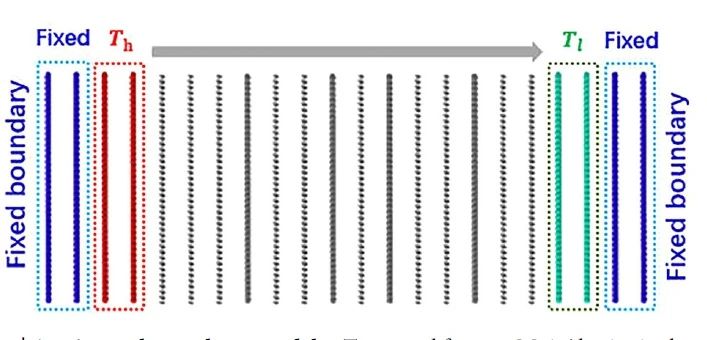海归学者发起的公益学术平台
分享信息,整合资源
交流学术,偶尔风月

在半导体和电介质材料中,热量的传导主要依靠声子(可以简单理解为晶格原子的振动波)。如果能让这些声子“迷路”甚至“堵车”, 或者困在某些局部区域内部“来回打转”,就能有效降低材料的热导率。这种思路对隔热防护、热电材料、节能设备等领域至关重要,但如何让声子“迷路”,并找到最有效的结构,是个较为复杂的研究问题。
Fig. 1 | A twist angle graphene model.
最近,来自中山大学陈科课题组的王敬文等人开展的一项研究中,为我们展示了“扭角工程+机器学习”的强大力量:他们在多层石墨烯的堆叠中,通过引入两个特定的扭角(0° 和约2.5°),并让层间的角度排列顺序错乱无序,成功让层间热导率降低了高达80%。这背后正是神奇的声子局域化(phonon localization)效应:声子因为界面无序产生复杂干涉,被部分“困”在局部区域,热量便难以通过。多层石墨烯的热导率之所以高,是因为声子可以几乎不受阻碍地在层与层之间穿行。而如果人为引入无序,比如层与层之间以不同角度扭转,就能让声子振动波不断碰到界面反射透射、并相互发生干涉,最终可能形成局域化的状态——就像一首合唱拆成很多个小合唱团,且各自关起门来唱,声音就传不远了。但问题来了:对于 14 层石墨烯,每层都可以是 0° 或2.5°,总共有16384 种堆叠方式。如果靠人工试验或计算去找最低热导率结构,耗时巨大,极难完成。
Fig. 2 |ML optimization results based on Bayesian optimization.
研究团队引入了两种机器学习算法:贝叶斯优化,像一个聪明的“寻宝者”,每次根据已知结果更新模型,快速锁定可能更好的结构;卷积神经网络(CNN),像一个擅长找规律的“图像识别专家”,从大量结构中学到哪些排列更能阻碍声子传导。两个算法最终都迅速找到了不同的最优无序结构,结果热导率都大幅下降,比完美对齐的石墨烯低了近 80%。更精彩的是,研究者还用分子动力学模拟与频谱分析,细致探究了为什么这些结构能有效阻碍声子:声子的传播频率集中在更低频段,并在更宽频率范围被压制;声子传输的统计分布显示出弱局域化特征(绝对局域化时的热导率为0);适度无序最有效:无序太少或太多反而效果不好。
Fig. 3 | Phonon transmission, phonon histograms analysis.
虽然研究对象是石墨烯,但这套思路可推广到所有层状二维材料,如 MoS₂、黑磷等,对热管理、热电器件、量子材料设计都有启发。该文近期发表于npj Computational Materials 11,195(2025),英文标题与摘要如下,点击左下角“阅读原文”可以自由获取论文PDF。
Machine learning revealed giant thermal conductivity reduction by strong phonon localization in two-angle disordered twisted multilayer graphene
Jingwen Wang, Zheng Zhu, Tianran Jiang & Ke Chen
In two-dimensional (2D) layer-stacked materials, the twist angle between layers provides extensive freedom to explore novel physics and engineer remarkable thermal transport properties. We discovered that the cross-plane thermal conductivity of multilayer graphene can be effectively controlled by arranging the layers with two specifictwist angles in a defined sequence. Disorderly aperiodic twisted graphene layers lead to the localization of phonons, substantially reducing the cross-plane thermal transport via the interference of coherent phonons. We employed non-equilibrium molecular dynamics simulations combined with machine learning approach, to study heat transport in the two-angle disordered multilayer stacks, and identified within the constrained structural space the optimal stacking sequence that can minimize the cross-plane thermal conductivity. Compared to pristine graphite, the optimized structure can reduce thermal conductivity by up to 80%. Through analysis of phonon transport properties across different structures, we revealed the underlying physical mechanism of phonon localization.
